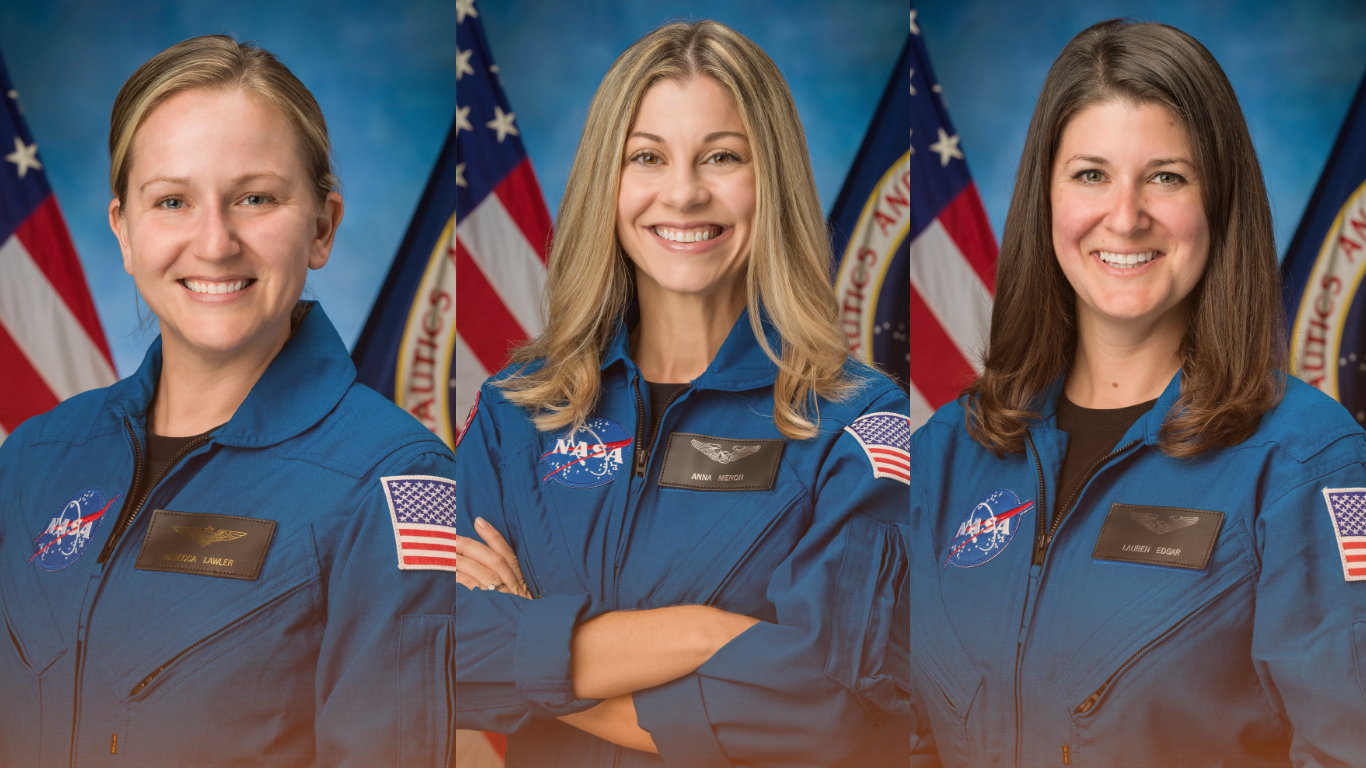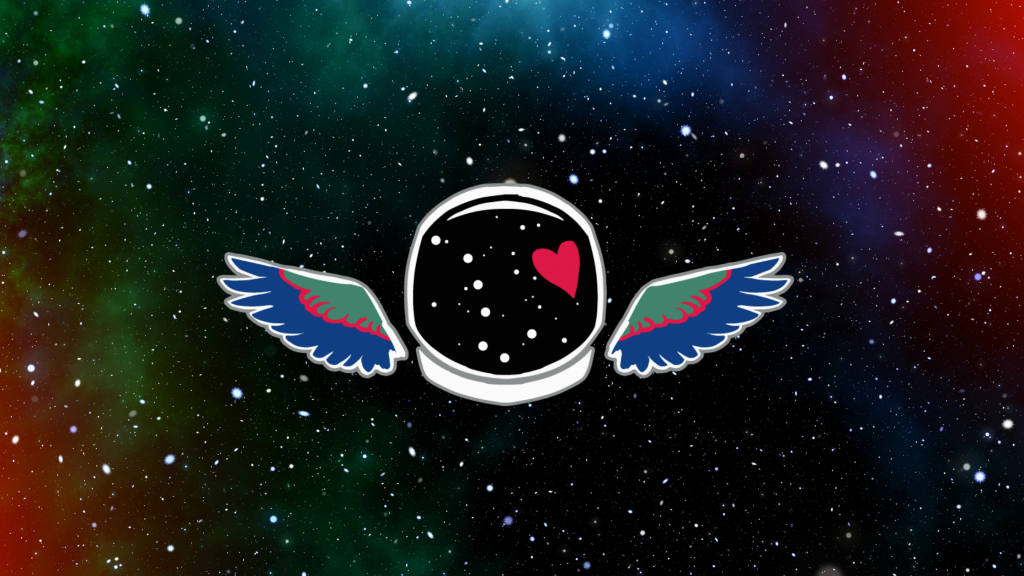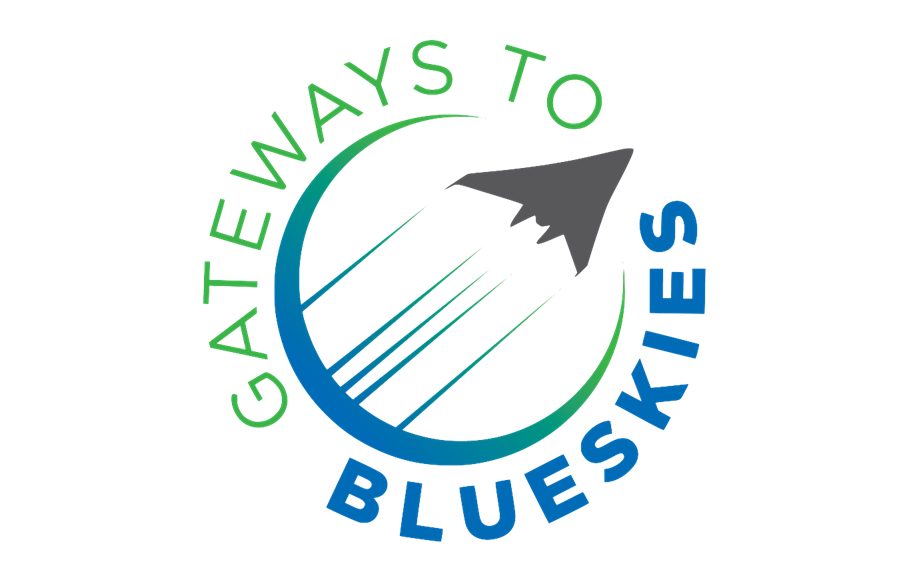
From Lone Star State to the Stars: Texas’ Newest Astronaut Candidates

NASA has welcomed its 24th class of astronaut candidates – ten explorers chosen from more than 8,000 applicants. Among them are two Texans and a former Space Grant scholarship recipient breaking new ground.
Rebecca ‘Becky’ Lawler (Little Elm, Texas), is a decorated naval aviator and pilot with more than 2,800 flight hours in 45 aircrafts. She has flown hurricane reconnaissance missions for NOAA, served in the U.S. Navy for 11 years, and has worked as a test pilot for United Airlines.
Anna Menon (Houston, Texas) is the first NASA astronaut candidate to have already flown in space. In 2024, Menon was aboard SpaceX’s Polaris Dawn mission where she conducted biomedical experiments. Previously, she worked as a biomedical flight controller at Johnson Space Center, supporting ISS crew medical systems.
Joining Menon and Lawler is Dr. Lauren Edgar, a planetary geologist and former New Hampshire Space Grant Scholarship recipient while she attended Darmouth College. She has spent nearly twenty years advancing Mars rover missions and helped shaped the Artemis III Geology Team’s mission.
Lawler, Menon, and Edgar now face two years of rigorous training before becoming eligible for flight assignments.
Space Teams University: Mars Autonomous Rover Rally

Your mission: explore the red planet.
The terrain is hazardous. Combine that with low gravity and poor visibility during dust storms, and your rover and mission could come to a quick end.
Join the Space Teams University: Mars Autonomous Rover Rally Design Challenge and explore the Kaiser Crater in the Martian Noachis Terra region for future habitability and in-situ resource utilization.
Top placing teams will receive scholarships.
Applications are due October 15.
RASC-AL Seeks Students to Revolution Aerospace Concepts

For over 20 years, RASC-AL has challenged undergraduate and graduate students to push the boundaries of innovation and engineering to develop old concepts that advance humanity’s ability to live and work on the Moon, Mars, and beyond.
For 2026, student teams are invited to tackle one of the following four themes: CPNT Architectures for Mars Surface Operations; Lunar Surface Power and PMAD Architectures; Lunar Sample Return Concept; and Lunar Technology Demonstrations Leveraging Common Infrastructure.
Deadline to submit Notice of Intent is October 13.
Brooke Owens Fellowship Opens Applications

The Brooke Owens Fellowship provides paid internships (in engineering, business, journalism, communications, and more) and executive mentorship to women and gender minorities in the aerospace industry.
Fellows have interned at over 30 host companies such as SpaceX, Blue Origin and Lockheed Martin. Each cohort also convenes for a 3-day summit in July to build connections with their class and network with top aerospace professionals.
Applications close October 13th.
NASA Gateways to Blue Skies On The Search for Novel Aviation Maintenance Advancements

GBS asks student teams to tackle critical challenges and opportunities within the aviation industry through a new project theme each year. The competition is guided by a push toward new technologies and fostering forward-looking, socially responsible aviation. For 2026, student teams are invited to conceptualize novel aviation maintenance advancements that can be implemented by 2035 or sooner with the goal of improving efficiency, safety, and/or costs for the industry.
Notice of Intent is due October 22.
THIS MONTH IN SPACE

OCT 1, 1958
NASA BEGINS
Eisenhower asks Congress to create a civilian space agency to oversee the nation’s space activities.
OCT 3, 1967
A NEED FOR SPEED
U.S. Airforce pilot Major William J “Pete” Knight flies the North American X-15A-2 to a speed of Mach 6.7, setting the world record.
OCT 4, 1957
THE FELLOW TRAVELER
The Soviet Union inaugurates the “Space Age” with its launch of the world’s first artificial satellite, Sputnik.
OCT 11, 1958
BUT FIRST: PIONEER 1
The U.S.’ fourteenth launch attempt and first by the fledging NASA. It would go on to take 43 hours of data.
OCT 14, 2017
OUMUAMUA APPROACHES
Oumuamua, the first interstellar object detected in our solar system, passes by at a distance of about 15,000,000 miles.
OCT 16, 2014
IRIS SHINES A NEW LIGHT
NASA’s Interface Region Imaging Spectrograph (IRIS) provides five new findings into how the sun’s atmosphere is heated far hotter than its surface. These findings include structures resembling mini-tornadoes in solar active regions, high-speed jets at the root of the solar wind, and the effects of nanoflares throughout the corona.
